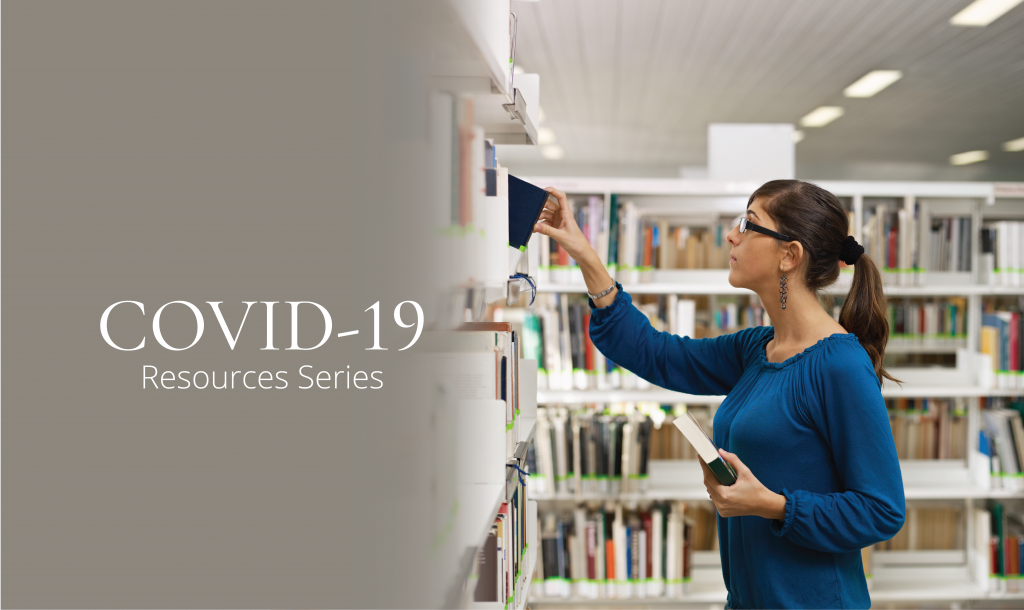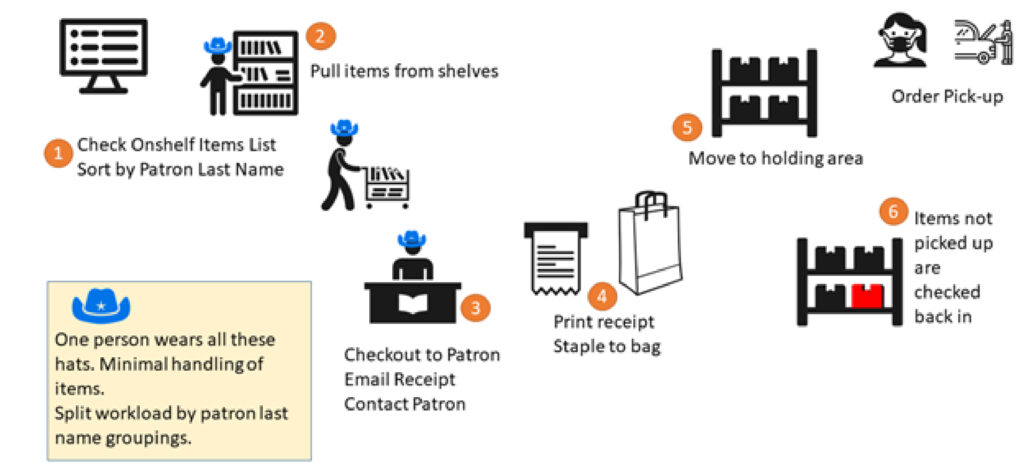
The phase 1 shutdown of libraries likely left your library users’ active holds in a somewhat messy state. The items on the shelf could have expired and are ready to be re-shelved or moved onto the next person in the hold queue. Preparing these items for pickup by patrons who missed their opportunity to pick up will allow you to experiment with packing and organizing material for home delivery or pick up of these items by patrons. It can serve ultimately as a soft opening of the library and buy some immediate good will from those library users.
Before your library staff processes the first batch of material for curbside, you should consider a fine-free option to curtail or eliminate the need for handling cash and coins. The ILS could be set up with lending parameters with longer than usual checkout times and with user parameters that charge no fines. Decisions on the number of renewals allowed and how patrons will be notified to return materials are important considerations within the fine-free “for now” option.
As part of the phase 3 of reopening plans, libraries are considering ways of keeping the facility closed to the public but making their collections available again through online requests with fulfillment through a curbside pick up. Library curbside designers should consider social distancing as a vital rule for library users — excessive return trips to the library should be avoided to maintain stay-at-home orders.
Your curbside should focus on maintaining a clear line between “clean” material and that which was recently returned. This means ensuring library staff shifts do not fall into working both roles of “dirty” returned material and “clean” material. Library staff should be processing material through a set cycle of defined steps in order to minimize handling of materials. They may not usually wear as many hats, but in the curbside service model, they might be following a sequence of steps previously completed by other departments and library staff.
Figure 2: Design your curbside operation from a safety first perspective, rather than position-based or department based.

The curbside service should entail pre-arranged times or set windows for pick up. You should also consider days of the week for designating when patrons can retrieve items. This will help with social distancing and minimize trips to the library by your most enthusiastic users. And because your library is retrieving and checking out material in one staff work shift, the need for regularly scheduled email and print notification makes little sense. You will need staff dedicated to contacting patrons and receiving notification of their status, whether they are enroute to the library or in line for curbside.
Bagged materials with paper receipts will allow library users to understand the lending periods and fine-free-for-now options you have put into place. You should utilize the capabilities of the LSP to email checkout receipts to library users when possible. Packing material for pick up can also serve as a promotional tool of other library services through fliers and how-to guides you include in the bagged material.
Homebound services already exist in many forms, and these models should be considered for home drop off to ensure library users that are staying at home or under quarantine remain connected to their library. It might not be appropriate to immediately utilize homebound service options within your LSP, but following a model of staff driving on routes with set delivery locations is one to consider in consultation with your homebound service librarians. Preparing home delivery would follow a similar process as your library curbside service.
One of the largest shifts my staff and our member libraries have had to undertake is rethinking circulation services. Once taboo circulation practices (e.g. checking out items to a patron without them being in front of you, checking out items to patrons with fines, requiring library cards for checkout) may become standard operating workflows. Another hurdle for a large consortium is rethinking how to transition from a resource sharing engine to a local service only model. This requires new thinking, different thinking – we are in a new place. Our service model must now be Safety First.